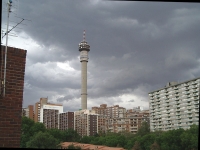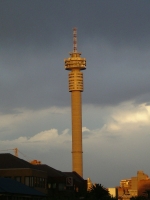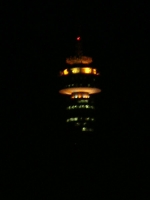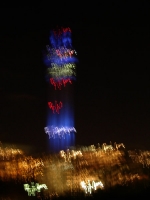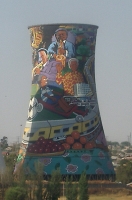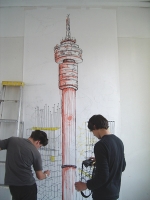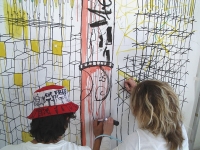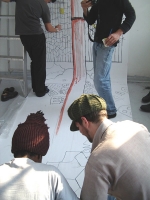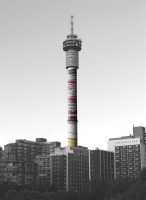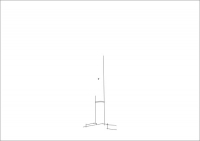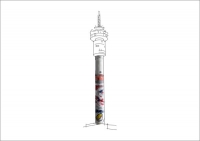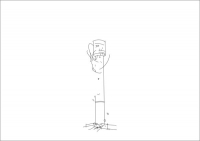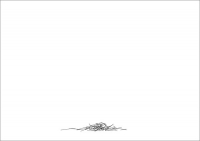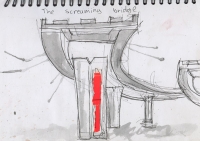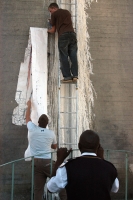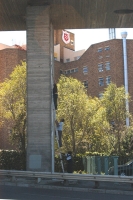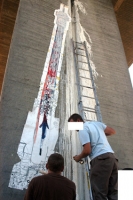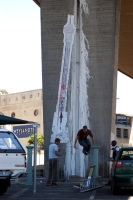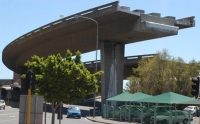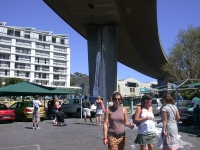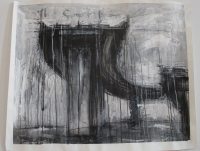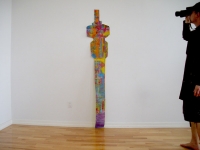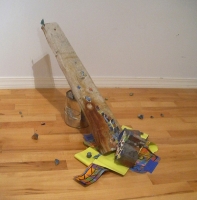Transmission / Disturbance / ...
The Hillbrow Tower Project (2003 - ongoing)
The construction of the Hillbrow Tower in Johannesburg commenced early in 1968, and was completed three years later in 1971.The top of the tower rose to 269 meters above the street level of Hillbrow, which marked the tower as being the tallest structure in Africa. The height of the tower was needed to ensure that skyscrapers being erected in Johannesburg would not interfere with the microwave signal. The signals from the tower move in straight lines, which means they need to be transmitted in a clear, unobstructed line of sight between stations. The Hillbrow Tower was closed to the public on 1 January 1981, as it was identified as a strategic point for terrorist attacks against the Apartheid Regime. The Hillbrow Tower is the most recognizable landmark / icon of the city of Johannesburg. Today Hillbrow is also one of the most degraded and neglected areas of in Johannesburg and the greater context of South Africa. Hillbrow is a poverty-stricken area that is plagued with high crime rates and many high-rise buildings plagued by inhumane living conditions.
My personal interest in the Hillbrow Tower emerged out of the drawing of connections between the ‘Tower’ and myself. The most direct connection being that I was born in Hillbrow and therefore connect with the ‘Tower’ as a vertical marker of my personal origin. My Initial response and approach was primarily based on the documentation of the tower from various directions, distances and at various times. This documentation was an ongoing practice until my departure from the city in March, 2006. The concept that emerged was inspired by a road trip through Soweto Township, where I was exposed to the painted old Orlando Power Station Cooling Towers. These huge painted surfaces inspired the idea of utilizing the external surface of the Hillbrow Tower for artistic intervention. I then met with a group of like-minded individuals with very extensive research on the tower, as well as conceptualized a full turn key regeneration program linked to the realization of the original tower project. A proposal was developed, but nothing emerged and eventually the building was branded and lighted 'Blue' with the Telkom corporate logo, a telecommunications corporation that controls a monopoly within the South African telecommunications industry.
I continued production on a personal level until 2005, when I shared the idea with Christian Nerf, another Johannesburg-based artist. Christian was busy setting up a workshop at his studios and invited me to participate as a project manager to my project. We brainstormed on possible routes and finally established what both of us would like to have as an outcome of the process. The workshop was a very successful process and over the 3-day period the project was introduced to over 50 local and national artists at various levels of their careers. A large format (6m x 1m) heavily layered mixed media painting of the Tower on paper was one of the major outcomes. This large painting was rolled up and stored for later use.
The animation and stills that were utilized in the, “cnr Bertha & Juta Street, Johannesburg” show were developed out of previous drawings and the rolled up ‘Tower’ artifact that emerged as a result of the workshop. The animation follows the narrative of the maturation and development of a structure that became the surface of creative flare, which eventually crumbles and collapses. Maybe even a prophet view of my own birth, life and eventual death.
As an extension and continuation of the project after the exhibition, in February 2006, I flew down to Cape Town (CT) with the intention of installing the large format ‘Tower’ painting in the public domain. It would not make sense to install the tower in Johannesburg (JHB); it would have more social value if installed somewhere where it would be less expected. There has always been an undercurrent of tension between JHB and CT, which set a more interesting and critical condition in which to continue the project. I immediately began location scouting and was drawn to what appears to be a symbol of engineering / architectural failure, the highway off ramps that end in mid-space that hover above and around the city. An interesting relation is that the Hillbrow Tower was seen as a symbol of engineering / architectural achievement. After planning and preparing the needed materials, the ‘Hillbrow Tower’ was installed illegally in Cape Town, on the 6th of February 2006 at 12pm noon, where it remained for several months until it was washed off by the summer rain.
Shortly after the installation in Cape Town, I set off for some travels and eventually relocation to New York City. Once there, I had the intention of eventually publishing a book to finally archive the project and move on (the final disturbance). But the 'Tower' even more than ever held its importance as a marker of that 'far off land' from where I come, and have left family and friends. The constant need for communication back and forth with my home, drives the project forward, transmission continues...

